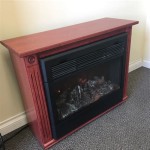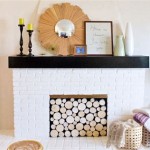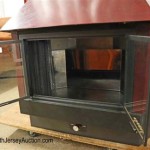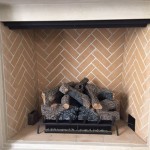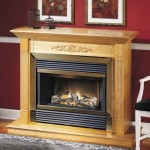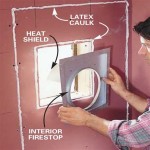```html
Heat Shield Fireplace: Protecting Your Home and Enhancing Fireplace Safety
Fireplaces offer warmth and ambiance, but they also present a potential fire hazard if not properly installed and maintained. A crucial component in ensuring fireplace safety is the heat shield. Heat shields are designed to mitigate the risk of combustible materials near the fireplace from overheating and potentially igniting. This article provides a comprehensive overview of heat shield fireplaces, covering their purpose, types, installation, and maintenance.
Understanding the Purpose of a Heat Shield
The primary function of a heat shield is to reduce the radiant heat emitted by a fireplace towards nearby walls and combustible materials. Fireplaces, particularly those with a high heat output, can generate significant amounts of radiant heat. This heat can raise the temperature of adjacent walls, framing, and other combustible materials to dangerous levels. Over time, prolonged exposure to high temperatures can lower the ignition point of these materials, increasing the risk of a fire.
Building codes often mandate the use of heat shields when a fireplace is installed close to combustible surfaces. These codes are designed to ensure a minimum clearance between the fireplace and these surfaces. A heat shield effectively increases this clearance by reducing the heat transfer to the combustible materials, thereby conforming to safety regulations and minimizing fire hazards.
Moreover, heat shields are not limited to just protecting walls. They can also be used to protect floors, ceilings, and even furniture positioned near the fireplace. Their versatility in application makes them a vital safety feature for any home with a fireplace.
Types of Heat Shields for Fireplaces
Heat shields are available in various types, each designed to suit different fireplace designs and installation requirements. Understanding the different types is essential for selecting the appropriate heat shield for a specific fireplace.
Wall Heat Shields: These are the most common type of heat shield, designed to be installed on the wall behind or beside the fireplace. They are typically made from non-combustible materials like metal, ceramic, or specially treated fiber cement boards. They can be directly attached to the wall or mounted with an air gap to further reduce heat transfer. The size and coverage area of the wall heat shield will depend on the heat output of the fireplace and the proximity of combustible materials.
Floor Heat Shields: These shields protect the floor beneath and around the fireplace from embers, sparks, and excessive heat. They are typically made from materials like brick, stone, tile, or metal. Floor heat shields are particularly important for fireplaces installed on wooden or carpeted floors. The dimensions of the floor heat shield must extend beyond the fireplace opening to effectively catch any falling embers or sparks.
Ceiling Heat Shields: These are less common but crucial in situations where a fireplace has a short chimney or is located near a low ceiling. Ceiling heat shields help to deflect heat away from the ceiling, preventing it from overheating and potentially causing a fire. They are often constructed from metal with a reflective surface to maximize heat deflection.
Appliance-Specific Heat Shields: Some fireplace manufacturers offer heat shields specifically designed for their models. These shields are engineered to provide optimal protection for the particular fireplace and are often integrated into the overall design. Using an appliance-specific heat shield can ensure proper fit and performance.
The selection of the appropriate heat shield depends on factors such as the fireplace type (wood-burning, gas, or electric), the heat output of the fireplace, the proximity of combustible materials, and the specific building codes in the area.
Installation Procedures for Heat Shields
Proper installation is crucial for a heat shield to function effectively. Incorrectly installed heat shields can compromise their protective capabilities and potentially increase the risk of fire. It is recommended to consult with a qualified professional for installation, especially if dealing with gas or wood-burning fireplaces.
Preparation: Before installing a heat shield, carefully measure the area where it will be placed. This will ensure that the shield provides adequate coverage and meets building code requirements. Ensure the surface where the heat shield will be installed is clean and free of any debris or obstructions. Gather all necessary tools and materials, including screws, anchors, measuring tape, a level, and safety glasses.
Wall Heat Shield Installation: The installation process for a wall heat shield typically involves attaching it to the wall using screws and anchors. For optimal performance, an air gap between the heat shield and the wall may be required. This can be achieved by using standoffs or spacers. Refer to the manufacturer's instructions for specific guidelines on spacing requirements. Use a level to ensure the heat shield is installed straight and plumb. Securely fasten the heat shield to the wall, ensuring that it is firmly in place.
Floor Heat Shield Installation: For floor heat shields, placement is often straightforward. The shield should be positioned so that it extends beyond the fireplace opening in all directions. Ensure the floor beneath the shield is level and stable. For heavier floor heat shields, such as those made of brick or stone, consider using a mortar bed to provide a secure and even base.
Ceiling Heat Shield Installation: Installing a ceiling heat shield may require more specialized skills and equipment. The shield needs to be securely attached to the ceiling joists or framing members. Ensure the shield is properly aligned and positioned to effectively deflect heat away from the ceiling. Consult with a professional contractor or fireplace installer for assistance with ceiling heat shield installation.
Adhering to Manufacturer Instructions: Always follow the manufacturer's instructions for installing a specific heat shield. The instructions will provide detailed guidance on proper installation techniques, spacing requirements, and safety precautions. Deviating from the manufacturer's instructions can compromise the effectiveness of the heat shield and void any warranties.
Maintenance and Inspection of Heat Shields
Regular maintenance and inspection are essential to ensure that a heat shield continues to function properly and provide adequate protection. Neglecting maintenance can lead to deterioration of the shield, reducing its effectiveness and potentially increasing the risk of fire.
Visual Inspection: Periodically inspect the heat shield for any signs of damage, such as cracks, dents, rust, or discoloration. Pay close attention to areas near the fireplace where the shield is exposed to the most heat. Check for any loose or missing fasteners. Replace any damaged or missing components promptly.
Cleaning: Clean the heat shield regularly to remove any dust, soot, or debris that may accumulate on its surface. Use a soft cloth or brush and a mild detergent to clean the shield. Avoid using abrasive cleaners, as they can damage the surface of the shield. Ensure the shield is completely dry before using the fireplace.
Professional Inspection: Schedule a professional fireplace inspection at least once a year. A qualified fireplace inspector can assess the condition of the heat shield and identify any potential problems that may not be visible during a visual inspection. They can also recommend any necessary repairs or replacements.
Addressing Concerns Promptly: If any concerns arise regarding the condition or performance of the heat shield, address them promptly. Ignoring potential problems can lead to more serious issues and increase the risk of fire. Consult with a qualified professional to diagnose and resolve any concerns.
By following these maintenance and inspection guidelines, homeowners can ensure that their heat shield continues to provide adequate protection and contribute to a safe and enjoyable fireplace experience.
In summary, a heat shield fireplace is a crucial safety measure for any home with a fireplace. By understanding the purpose, types, installation, and maintenance of heat shields, homeowners can effectively protect their homes from fire hazards and enjoy the warmth and ambiance of their fireplace with peace of mind.
```
Enhance Your Fireplace With A Wood Stove Heat Shield Charnwood Stoves

How To Build Heat Shields For Wood Stoves Tiny Stove

Vlaze Heat Shield 800mm X 1800mm Bonfire Fireplaces

Fireplace Surrounds Heat Shields For Stoves Scarlett Fireplaces

A Guide To Wood Burning Stove Heat Shields Direct Stoves

How To Diy A Wood Stove Heat Shield Small Life

A Guide To Heat Shields For Wood Burning Stoves Bonfire

Fireplace Surrounds Heat Shields For Stoves Scarlett Fireplaces

Fireplace Surrounds Heat Shields For Stoves Scarlett Fireplaces

Vlaze Heat Shield 800 X 1200 Enamel Black Furniture Fireplaces Ltd
Related Posts


